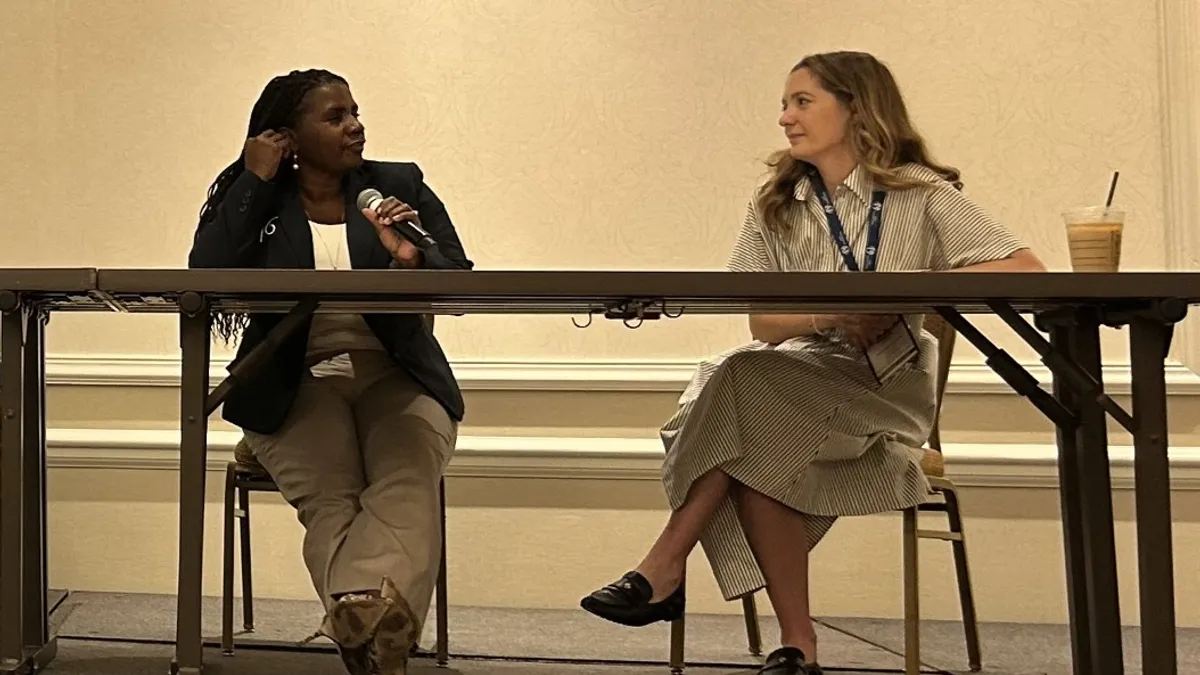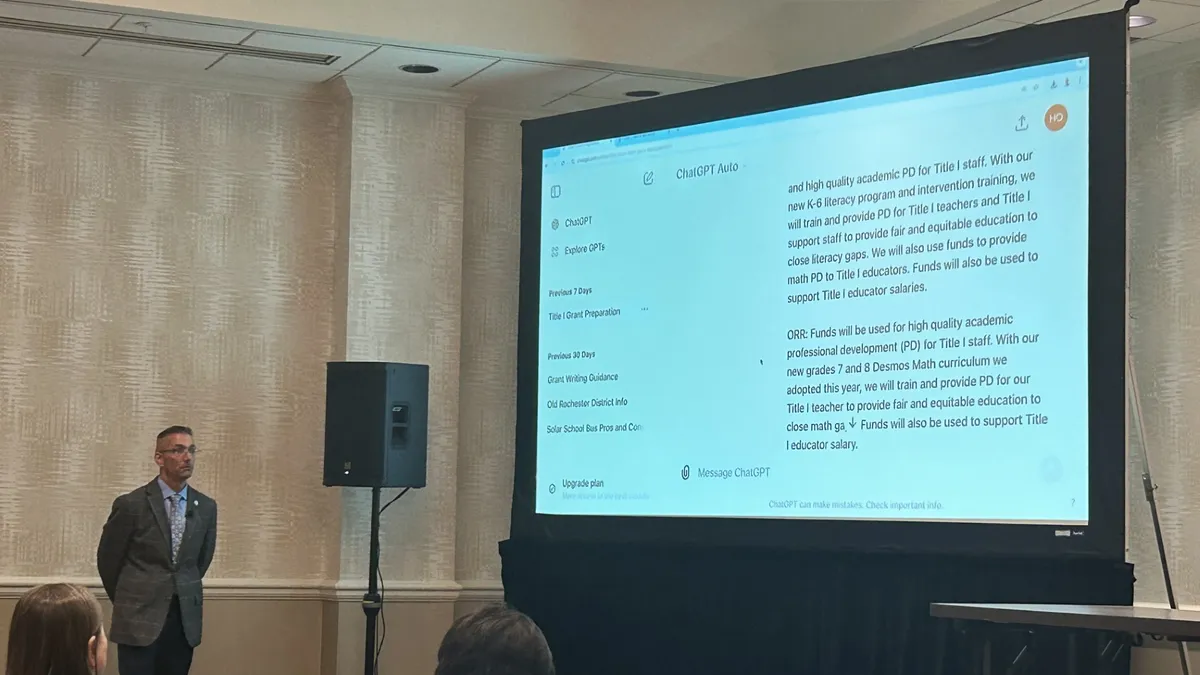NASHVILLE — The cost of special education is rising as more students are being identified for these services, taking up a larger portion of school budgets and forcing tough decisions over cuts.
That’s why school districts need to pay more attention to their special education spending, said Maggie Cicco, a research fellow at Georgetown University’s Edunomics Lab, told attendees during a Thursday session at the Association of School Business Officials International annual conference.
“Once you lock in that money, because of maintenance of effort, you’re going to have to consistently spend that much money year over year,” Cicco said. “So we’re asking, ‘Are these increases actually delivering value?’”
The number of students identified for special education is growing rapidly nationwide — increasing from 6.4 million to 7.5 million between the 2012-13 and 2022-23 school years, according to the National Center for Education Statistics. This represents an increase from special education students making up 13% of total public school enrollment to 15% over that decade.
But Edunomics Lab’s analysis comparing the percentage of students identified for learning disabilities with 2019 reading scores on a statewide basis suggests that the identification of more students does not necessarily ensure that they see better academic outcomes, Cicco said.
In one example from this data, Cicco pointed out that New Mexico school districts diagnosed 7.5% of students with a learning disability — a high rate compared to most states — but reading scores for students with disabilities in that state were still low.
One factor that’s driving the cost structure of special education is increased staffing, Cicco said, adding that the ratio of special education staff to students with disabilities varies by state. Since 2007, the number of special education teachers rose 12%, while specialist and paraprofessional staffing surged 35% and 37%, respectively. Cicco added that the overall growth in special education staffing nationwide stems from an increase in paraprofessionals and specialists.
In another Edunomics Lab analysis, Cicco said, the organization’s data found that higher special education staffing does not equate to better outcomes for students with disabilities. In Florida, for instance, there’s generally fewer special education staff compared to other states, but its special education students still outperformed most other states in reading, Cicco said.
Ann Williams, deputy superintendent of operations at U-46 School District in Streamwood, Illinois, shared during the session that hiring support staff — not teachers — is driving up costs for the district’s annual budget. Some of those additional support roles include family engagement liaisons, social workers and behavior analysts, she said.
Scrutinize your special education budget
Before making major investment decisions to enhance special education services through staffing or other avenues, district leaders should outline what outcomes are expected from these additions to the budget, Cicco said. Then, they should check in and make sure those investments are leading to desired outcomes.
“Scrutinize your special ed budget,” Cicco said. “Think about what you’ve been investing in, cross reference those with any outcomes you want to see for students, and if you haven’t been collecting data … I would start that conversation.”
If possible, district and state leaders should try to compare special education costs and outcomes to their peers, she said. That can be challenging, however, given how much that kind of data differs across districts and states.
Though not solely specific to its special education budget, U-46 School District is beginning to implement a “fiscal equity budgeting methodology” that requires instructional staff to examine programs on an annual basis to see if they’re meeting set goals for certain student groups.
This new approach for the district comes as Illinois implements a new funding model that allocates additional funding for special education students, English learners and low-income students, Williams said. While these recent investments will takes years to measure and implement, the district will undergo an annual evaluation to track progress.
“With that allocation, we hold the administration accountable at the end of the year,” Williams said, adding that the district will be asked questions such as: How was that money spent, and what outcomes were found?
“Because when the time [comes] to prepare for the budget next year, if we haven’t made outcomes, I expect your entire budget to change because that didn’t work,” Williams said.







 Dive Awards
Dive Awards








